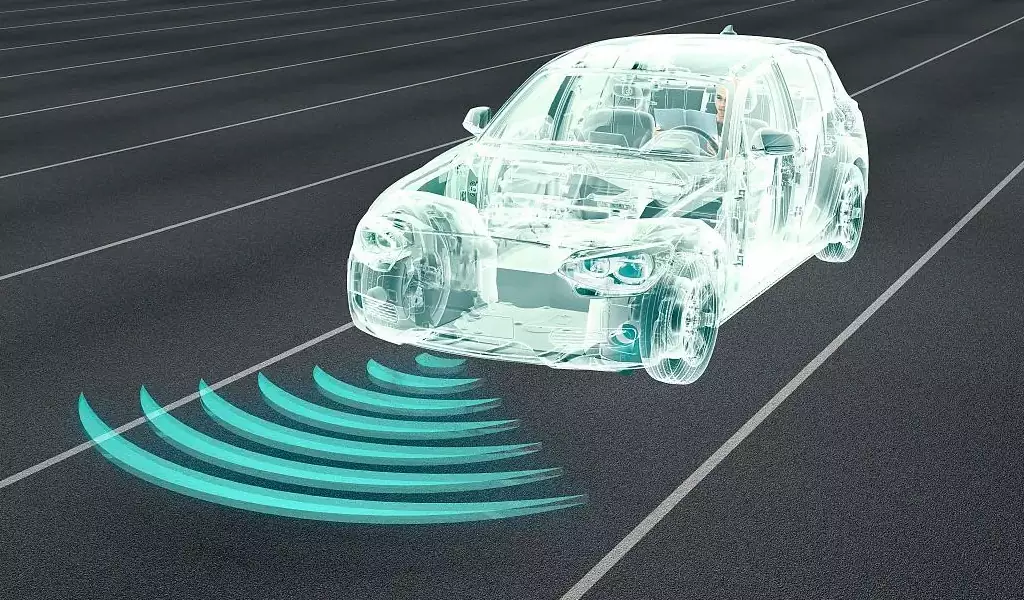Millimeter wave radar is a radar that operates on millimeter wave detection. Usually, millimeter wave refers to the frequency domain of 30-300GHz (wavelength of 1-10mm). The wavelength of millimeter waves is between centimeter waves and light waves, so millimeter waves have the advantages of both microwave guidance and optoelectronic guidance. Compared with centimeter waveguide heads, millimeter waveguide heads have the characteristics of small size, light weight, and high spatial resolution. Compared with optical guidance heads such as infrared, laser, and television, millimeter wave guidance heads have strong ability to penetrate fog, smoke, and dust, and have the characteristics of all-weather (except for heavy rain) all day long. In addition, the anti-interference and anti stealth capabilities of millimeter wave guidance heads are superior to other microwave guidance heads.
Compared with centimeter waveguide heads, millimeter waveguide heads have the characteristics of small size, light weight, and high spatial resolution. Compared with optical guidance heads such as infrared, laser, and television, millimeter wave guidance heads have strong ability to penetrate fog, smoke, and dust, and have the characteristics of all-weather (except for heavy rain) all day long. In addition, the anti-interference and anti stealth capabilities of millimeter wave guidance heads are superior to other microwave guidance heads. Millimeter wave radar can distinguish and recognize very small targets, and can also recognize multiple targets simultaneously. Has imaging capability, small size, good maneuverability and concealment, and strong survival ability on the battlefield.
The application range of millimeter wave radar
1. Military applications: mainly used in missile guidance, target monitoring and interception, artillery control and tracking, radar measurement, terrain tracking, missile fuses, ship navigation and other aspects.
2. Automotive electronics: mainly used for forward collision avoidance, lateral collision avoidance, backward collision avoidance, automatic cruise control, automatic start stop, blind spot monitoring, pedestrian detection, and autonomous driving of automobiles.
3. Security system: mainly used for high-end security systems, such as airport intrusion detection, prison perimeter security, indoor intrusion alarm, Millimeter wave radar/visual fusion detection, military area protection, island security, oil depot security system, power grid security system, and three-dimensional garage life detection.
4. Intelligent Traffic Radar: Traffic Checkpoint Radar: Stop Rod Detection, Early Detection, Stop Rod Plus Early Detection, Vehicle Queue Length Measurement, Main Road Management: Traffic Flow Detection, Classification and Statistical Analysis, Accident Monitoring (Detecting Slowing or Stopping Vehicles), Reverse Detection, Enforcement Sensors: Vehicle Speed Detection at Intersections or Roads, Red Light Enforcement at Intersections or Roads, Mobile Enforcement (Speed Measurement or Rear end Collision Enforcement, Installed on Police Cars), Mobile Signal Lights, Highway Exit Tips, Radar Speed Signs, Toll Stations, Intelligent Parking Lot Management.
5. Drone radar: Radar altimeter: automatic landing, absolute altitude measurement, terrain prompt (terrain prompt and warning), altitude change measurement (vertical velocity component), terrain mapping, used for standard drones, small drones, fixed wing and rotary wing aircraft, vertical takeoff and landing aircraft and other drones, airdrop height sensor: absolute altimeter for airdrop guidance unit, precise airdrop, warning: detects and tracks objects in the space where the drone is located, detects nearest objects (position and relative velocity), collision warning.
6. Medical services: heartbeat and breathing detection, special patient monitoring, sleep disorder detection, life detection, infant monitoring.
7. Intelligent Lighting: Parking Lot Automatic Lighting System, Street Lamp Automatic Lighting System, Corridor Automatic Lighting System.
8. Industrial control: automatic door sensors, escalator sensors, AGV collision avoidance sensors, elevator automatic sensing, heavy machinery collision avoidance, robot collision avoidance.
9. Sports: Measuring speed, such as golf speedometer, motion speed measurement, and object trajectory analysis.
10. Sanitary ware: Used to detect whether a person has approached, such as smart toilets, faucet sensors, soap dispensers, and hair dryers.
11. Teaching and training: Provide portable real radar systems that can be used for indoor and outdoor teaching and experimentation for ordinary higher education institutions, aviation schools, maritime schools, and military schools.

Application of Millimeter Wave Radar
According to the characteristics of Millimeter wave radar, it is easy to meet the following application requirements
1. High precision multidimensional search measurement: perform high-precision distance, azimuth, frequency, and spatial position measurement and positioning.
2. The radar installation platform has strict requirements for volume, weight, vibration, and other environmental factors: the millimeter wave radar antenna is small in size and light in weight, making it easy to meet the special environmental requirements of different platforms such as portable, missile borne, vehicle mounted, airborne, and satellite borne.
3. Target feature extraction and classification recognition: Millimeter wave radar has high resolution, wide operating frequency band, large value Doppler frequency response, short wavelength to easily obtain target detail features, and clear contour imaging, which are suitable for important tactical requirements of target classification and recognition.
4. Small target and close range detection: The optical zone size corresponding to millimeter wave short wavelengths is smaller, making it more suitable for small target detection compared to microwave radar. Except for remote millimeter wave radar such as special space target observation, general millimeter wave radar is suitable for close range detection below 30 km.
5. Strong resistance to electronic warfare interference: The millimeter wave window has a wide available frequency band, making it easy to carry out wideband spread spectrum and frequency hopping design. At the same time, the reconnaissance and jamming equipment for millimeter wave radar faces challenges such as wideband, atmospheric attenuation, and narrow beam interference. Millimeter wave radar has better anti-interference ability compared to microwave radar.